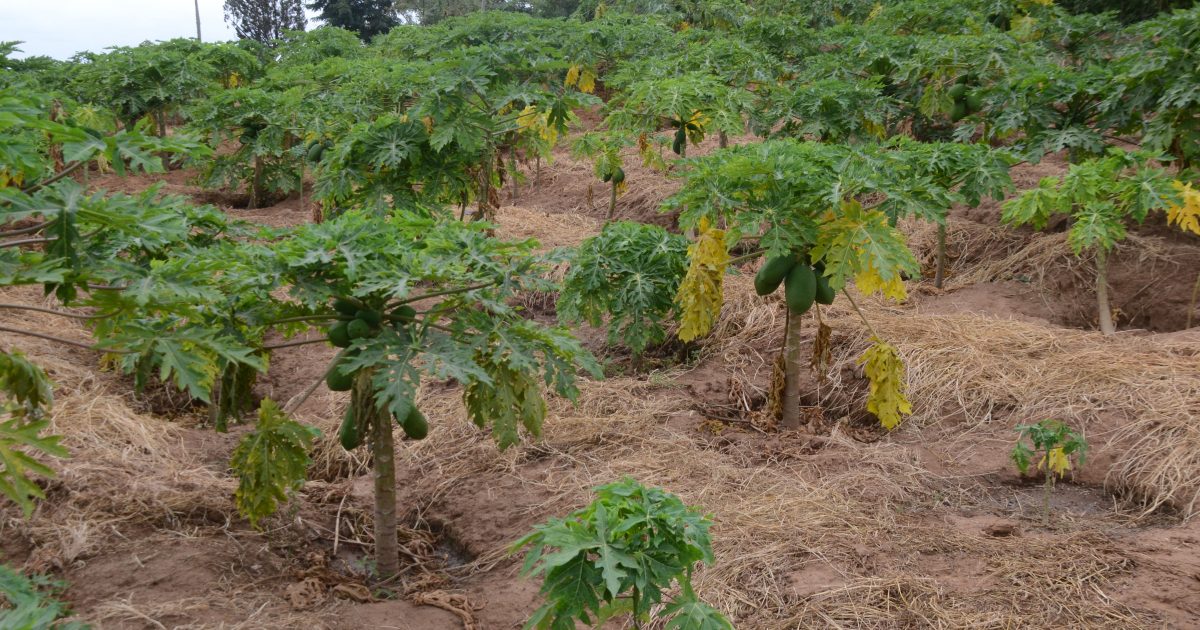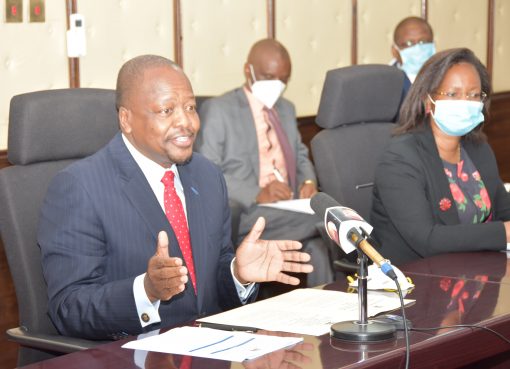Papaya farmers in Murang’a have been urged to practice smart agricultural practices for profitable farming so as to ensure food safety and security in the country.
Agronomist Francis Kamau Mwamba observes that the first step to profitable papaya farming is in knowing and understanding the nutrients available to the roots.
“Testing the soil is a must-do for any farmer who intends to reap returns in Agri -investment because the soil PH majorly determines the nutrients that will be available to the plants” he states.
“A good soil PH coupled with other right agronomic practices will enable a pawpaw farmer to harvest 70 – 150 fruits per tree annually,” he says.
Moreover, notes Kamau, testing your soil helps you know the type and amount of food or nutrients available for your paw paws and hence you can successfully decide on the fertilizer to use on the soil.
“Testing the soil and its analysis aids in building soil health thus improving crop resistance to pests and diseases” he observed.
Pawpaw also known as pawpaw carica papaya does well in light well-drained soils with a soil PH of 6.0 to 6.5 and varieties range from those that can withstand drought to those that require round-the-clock irrigation.
The agronomist further underscored the need for farmers to choose quality seeds for optimum yields.
“Choose high quality fast maturing pawpaw variety, one that has a high tolerance to papaya ringspot virus and is highly productive like the Malkia F1 variety or the Calina 1PBP variety.”
“Its fruits, he says, are firm, weigh 1.5 to 2kgs in weight, and have a long shelf life thus is deal for export and long-distance transportation.”
Consequently, farmers can also use agricultural lime as a natural, low-cost way to improve the soil to enhance the effects of regular chemical-based fertilizers.
“Lime increases the PH. of acidic soil thus reducing soil acidity and increasing its alkalinity as well as providing the plants with calcium which is important for better yields and high profits” notes the agronomist.
Kamau further advises farmers not to go for shortcuts as this will be detrimental to getting the profits they desire from papaya.
“After soil testing ensure that the planting holes are dug 2.5 by 2.5m apart and at least 2ft and mix the topsoil with not less than two buckets of well-composed manure,” he stressed.
The manure will retain water due to its high water holding capacity (WHC) and will help the papaya to withstand areas that have long dry spells between rainfalls.
Manure, when mixed properly with soil, will release nutrients over time and then leach away into groundwater like other organic matter can do thus increasing the yields.
The hybrid Papaya variety matures eight months after planting and stays active for up to four years.
By Florence Kinyua





